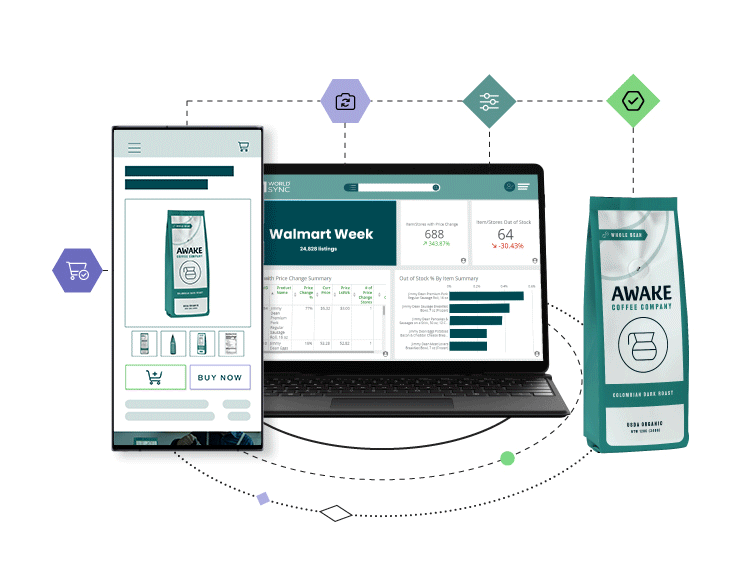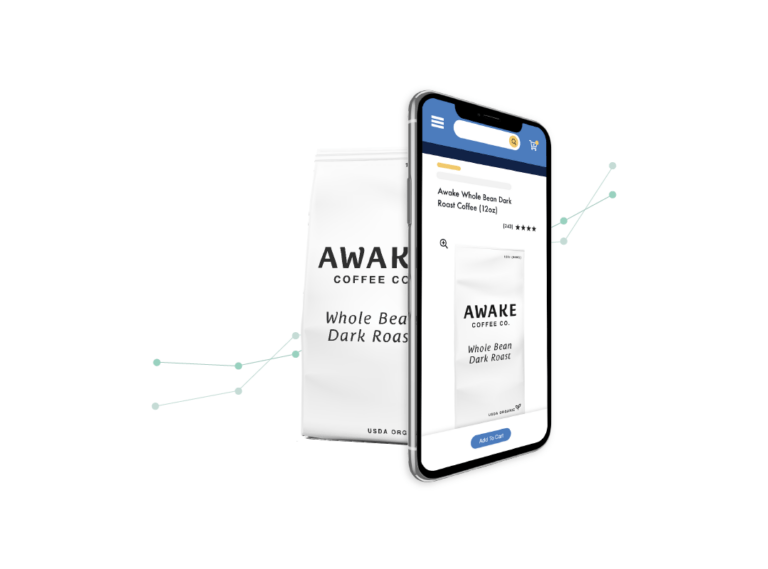E-commerce is a multifaceted industry, constantly evolving to meet consumer demands within an expanding digital shelf. Optimizing your presence in omnichannel retail requires you to strategically approach your content and your performance evaluation on the digital shelf.
This article explores the one-two punch of retail analytics and content accuracy. We’ll dive into each aspect as they relate to omnichannel retail and how pairing the two components helps you thrive in the most competitive retail landscape of all time.
Consumer Expectations in Omnichannel Retail
1WorldSync recently surveyed commerce professionals and asked them to summarize the state of product content. Seventy percent of those surveyed responded with this question: “How do we make sure our content is always accurate, consistent, and relevant across every channel in a fast-moving market?”
Product content is the most critical element of any retail strategy. In an omnichannel retail environment, your content is your product. Shoppers look to retailers to provide product content that provides a suitable substitute for an in-person shopping experience.
A 2022 report from 1WorldSync found that the channel consumers choose carries less weight than product content consistency. Eighty-one percent of consumers expect a brand’s product content experience to be similar everywhere they interact with that brand.
Content accuracy across channels is a non-negotiable for brands and retailers. When consumers conduct product research, they interact with multiple brands across various channels before purchasing. Most consumer research at least four products (52 percent) and visit numerous sites (89 percent), with 28 percent of shoppers visiting at least four sites.
Consumers want to know as much as possible before investing in a product. And thanks to the accessibility offered by the digital shelf, they can evaluate product content, compare details and product elements, and choose the best product for the best value according to their wants and needs.
Because consumers scour pages of product content before purchase, brands must prioritize content accuracy across all channels to compete in the omnichannel space. Consumers demand a plethora of content and expect it to be accurate, up-to-date and consistent on every channel. By evaluating retail analytics in your product content strategy, you can know precisely what content consumers want and need to commit to your products and brand.
Understanding Retail Analytics
Retail is a numbers game. Data is essential for brands to know their performance: weaknesses, strengths, growth and profits. Retail analytics is the science of collecting, analyzing, interpreting and reporting data related to a retailer’s operations.
It’s the cornerstone of successful and sustained retail and accomplishes the following:
- Analyzes and evaluates consumer behavior
- Tracks inventory levels
- Measures the effectiveness of marketing campaigns
Data collected from retail analytics provides insights into how you run every aspect of your store and brand.
For example, by tracking customer purchase histories and POS systems, you can intimately understand shopper behavior, which empowers you to make adjustments that better serve your audiences: product offering, pricing, return policies, etc.
Analytics can also guide marketing decisions, including the product content that most effectively engages shoppers and which promotions or campaigns will likely yield a high ROI.
Retail analytics is an aggregation of data that helps you see the big picture of your operations and takes the guesswork out of business decisions. Historical data and instinct won’t put the market in your hands, but retail analytics will guide you toward increased sales, reduced costs and greater customer satisfaction and loyalty. And when you pair retail analytics with quality, accurate content, you support your marketing strategies and position yourself to come out on top.
Why Content Accuracy Matters
Product content is the primary driver of engagement, traffic and sales. In e-commerce and omnichannel spaces, your product content represents your product and brand. And as consumers increasingly shop across various channels and retailers, your product content accuracy is more important than ever.
Product descriptions, imagery, videos and rich content must be consistent across every channel. We explore various aspects of content accuracy and consistency below.
1. Product Information
Your product detail pages are often the landing place for shoppers browsing potential purchases. And if your PDPs provide the right content targeted to the consumer, they’re often the last place a shopper lands before adding the product to their cart.
Ensure all PDP content is accurate: product descriptions, specs, images, comparisons and shipping and return policies.
Accuracy on your PDPs gives shoppers the information they need to make an informed, confident decision. Additionally, it sets realistic expectations for the product upon delivery, ensuring a positive customer experience and reducing your return rates.
2. Messaging Consistency
Content accuracy across channels supports messaging consistency and reinforces your branding and brand identity. Familiarity and consistency cultivate comfort; when shoppers feel comfortable, they’re more likely to trust your brand and shop for your products.
3. User-Generated Content
Original content isn’t the only content on your PDPs and retail sites. User-generated content, including reviews, testimonials and images, gives shoppers the social proof they want before committing to a purchase.
User-generated content is crucial to instilling trust in your product and brand. Reviews and ratings carry more weight than any other purchase factor, including price.
Optimizing UGC content for quality and accuracy is critical. You must maintain consistency within UGC to ensure it supports your marketing and online sales.
4. Regulatory Compliance
Your product content must meet industry standards and regulations. If you don’t maintain regulatory compliance, you won’t have visibility on the digital shelf. And without visibility, you don’t make sales.
Leveraging a single source of truth empowers you to meet product data requirements, ensuring the accuracy and consistency of core product attributes that enable retail partners to sell your products.
Omnichannel retail is increasingly complex. The digital shelf continues to expand, and new products, content and vendors add to the space daily. As a result, brands and retailers need effective tools to manage the influx of product content in these online retail spaces to ensure accuracy across all channels.
Keeping Up with Evolving Retail
Brands and retailers must establish a content strategy that prioritizes and secures consistency in product content. Your content is the guide for shoppers considering product purchases. Quality, helpful content requires resources to ensure it meets consumer needs and demands and helps you achieve your KPIs.
But how can you measure content performance? That’s where retail analytics comes into play.
A robust retail analytic approach will identify the content that converts and provide helpful insights into building an even more effective content strategy. The data collected helps quantify customer engagement with your content and guides the next steps.
For example, your analytics can determine which pieces or content types engage users and lead to conversions and higher average order values. Knowing the most effective content guides future content decisions and resource investment and informs your overarching content strategy.
Retail analytics and content accuracy are the one-two punch of omnichannel sales. When both elements of your marketing strategy are executed simultaneously, you can create content consumers want, need and expect from retailers. You will have a more effective, sales-driven content strategy when you prioritize accuracy and conduct retail analysis to gain insights into your efforts.
Conclusion
Retail analytics and content accuracy go hand in hand as brands create their omnichannel sales and marketing strategies. Optimizing accuracy and analysis positions your brand to sell more, earn more profits and take advantage of the expanding opportunities the digital shelf provides.
1WorldSync provides the tools to ensure product content accuracy and gather retail analytics that empower you to move forward with confident, data-driven insights. Connect with our team today to learn how our solutions are built to enhance and optimize your online presence.





